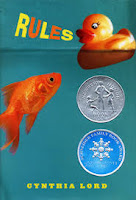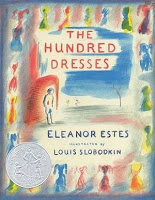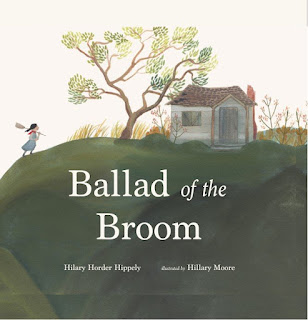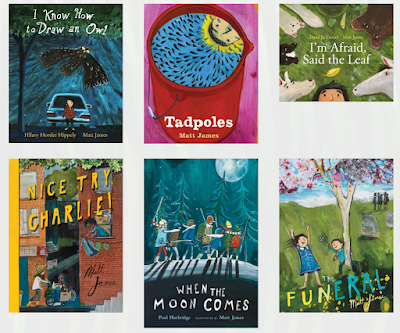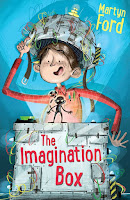After I read Magnolia Wu unfolds it all I was curious to see which Newbery books (winners and honor titles) I had read and of course the ones I had missed. This week I also revisited Charlotte's Web which was a Newbery honor title in 1953. You can see covers of all the winners from 1922 onwards in this video (I have read 44 of the books she shares - it is odd the way she cannot pronounce so many author names).
The John Newbery Medal, frequently shortened to the Newbery, is a literary award given by the Association for Library Service to Children (ALSC), a division of the American Library Association (ALA), to the author of "the most distinguished contributions to American literature for children". The Newbery and the Caldecott Medal are considered the two most prestigious awards for children's literature in the United States. ... To be eligible, a book must be written by a United States citizen or resident and must be published first or simultaneously in the United States in English during the preceding year. Six authors have won two Newbery Medals each, several have won both a Medal and Honor, while a larger number of authors have won multiple Honors. (Wikipedia)
There is always some controversy about awards - we have our own share of this here in Australia - so I was interested to read this School Library Journal article from 2010 by Anita Silvey. Then ALSC President Pat Scales responded, "the criterion has never been popularity. It is about literary quality. How many adults have read all the Pulitzer Prize-winning books and... liked every one?"
So here are some of the books I have either talked about here on this blog or read in the past (prior to the start of this blog in 2008). This activity reminded me of so many titles I thoroughly enjoyed, but interestingly, I had no idea that many of these were in fact past Newbery awardees. I have added Newbery as a label to this post and when you click that you will find my posts about each of these books (that was quicker than linking every title) although I did link a few extra special ones.
Newbery 2000-2025 Books I have read ...
2025 Honor Books:
The wrong way home by Kate O'Shaughnessy
Magnola Wu Unfolds it all by Chanel Miller
2024 Medal Winner: The Eyes and the Impossible, by Dave Eggers
2024 Honor Books:
Elf Dog and Owl Head, by M.T. Anderson, illus. by Junyi Wu
Simon Sort of Says, by Erin Bow
2023 Medal Winner: Freewater by Amina Luqman-Dawson
2023 Honor Books:
The Last Mapmaker by Christina Soontornvat
2022 Medal Winner: The Last Cuentista by Donna Barba Higuera
2021 Honor Books:
We Dream of Space by Erin Entrada Kelly, illustrated by Erin Entrada Kelly and Celia Krampien
A Wish in the Dark by Christina Soontornvat
2020 Honor Books:
Other Words for Home by Jasmine Warga
2019 Honor Books:
The Book of Boy by Catherine Gilbert Murdock, illustrated by Ian Schoenherr
The Night Diary by Veera Hiranandani
2018 Medal Winner:
Hello, Universe by Erin Entrada Kelly
2018 Honor Books:
Piecing Me Together by Renée Watson
2017 Medal Winner:
The Girl Who Drank the Moon by Kelly Barnhill
2017 Honor Books
Wolf Hollow by Lauren Wolk
2016 Medal Winner:
Last Stop on Market Street by Matt de la Peña
2016 Honor Books
The War that Saved my Life by Kimberly Brubaker Bradley
Echo by Pam Muñoz Ryan
2015 Honor Books:
El Deafo by Cece Bell
2014 Medal Winner:
Flora & Ulysses: The Illuminated Adventures by Kate DiCamillo
2014 Honor Books:
The Year of Billy Miller by Kevin Henkes
One Came Home by Amy Timberlake
2013 Medal Winner:
The One and Only Ivan by Katherine Applegate
2013 Honor Books:
Three Times Lucky by Sheila Turnage
2012 Honor Books:
Inside Out & Back Again by Thanhha Lai
2011 Medal Winner:
Moon over Manifest by Clare Vanderpool
2011 Honor Books:
One Crazy Summer by Rita Williams-Garcia
2010 Medal Winner:
When You Reach Me by Rebecca Stead
2010 Honor Books:
The Evolution of Calpurnia Tate by Jacqueline Kelly
Where the Mountain Meets the Moon by Grace Lin
2009 Medal Winner:
The Graveyard Book by Neil Gaiman, illus. by Dave McKean
2009 Honor Books:
The Underneath by Kathi Appelt, illus. by David Small
Savvy by Ingrid Law
2008 Honor Books:
Elijah of Buxton by Christopher Paul Curtis
The Wednesday Wars by Gary D. Schmidt
Feathers by Jacqueline Woodson
2007 Honor Books:
Rules by Cynthia Lord
2006 Honor Books:
Whittington by Alan Armstrong, illustrated by S.D. Schindler
Princess Academy by Shannon Hale
2005 Medal Winner:
Kira-Kira by Cynthia Kadohata
2004 Medal Winner:
The Tale of Despereaux: Being the Story of a Mouse, a Princess, Some Soup, and a Spool of Thread by
Kate DiCamillo, illustrated by Timothy Basil Ering,
2004 Honor Books:
Olive's Ocean by Kevin Henkes
2003 Medal Winner:
Crispin: The Cross of Lead by Avi
2003 Honor Books:
Pictures of Hollis Woods by Patricia Reilly Giff
Hoot by Carl Hiaasen
A Corner of The Universe by Ann M. Martin
2002 Medal Winner:
A Single Shard by Linda Sue Park
2002 Honor Books:
Everything on a Waffle by Polly Horvath
2001 Medal Winner:
A Year Down Yonder by Richard Peck
2001 Honor Books:
Because of Winn-Dixie by Kate DiCamillo (Candlewick Press)
2000 Medal Winner:
Bud, Not Buddy by Christopher Paul Curtis
And here are some past winners and honor titles I would like to read:
Looking further back at the Newbery lists I also spied other books I loved such as A Cricket in Times Square; On the Banks of Plum Creek; The Hundred dresses; My Father's Dragon; From the Mixed-Up Files of Mrs. Basil E. Frankweiler; Summer of the Swans; Mrs. Frisby and the Rats of NIMH; The Upstairs Room; The Dark Is Rising; Bridge to Terabithia; The Great Gilly Hopkins; Dicey's Song; Sarah, Plain and Tall; The Whipping Boy; Hatchet; Number the Stars; Shiloh; Missing May; The Giver; Walk Two Moons; Catherine, Called Birdy; The Midwife's Apprentice; The Watsons Go to Birmingham – 1963; The View from Saturday; Out of the Dust; Lily's Crossing; Ella Enchanted; and Wringer.






















